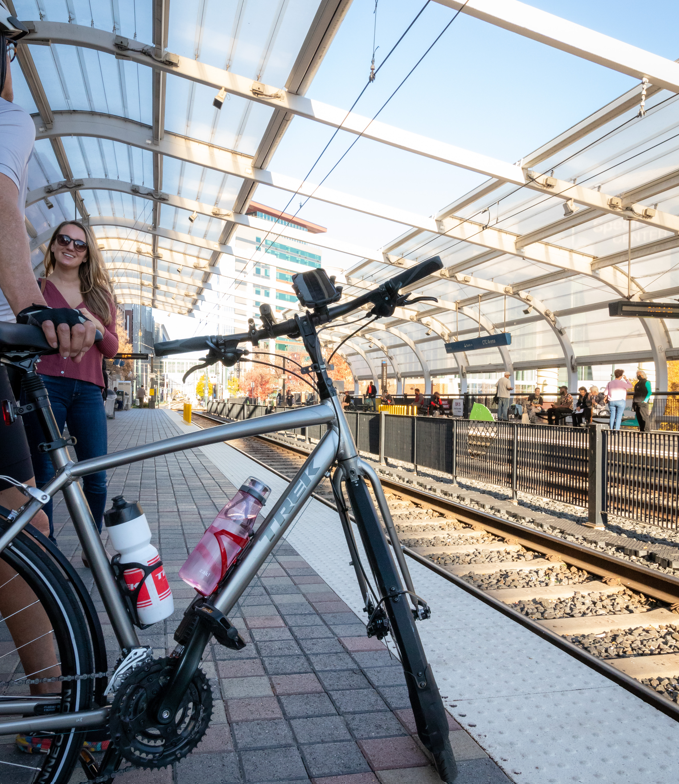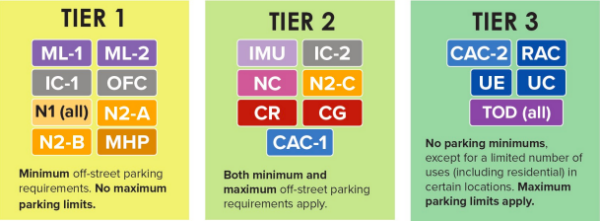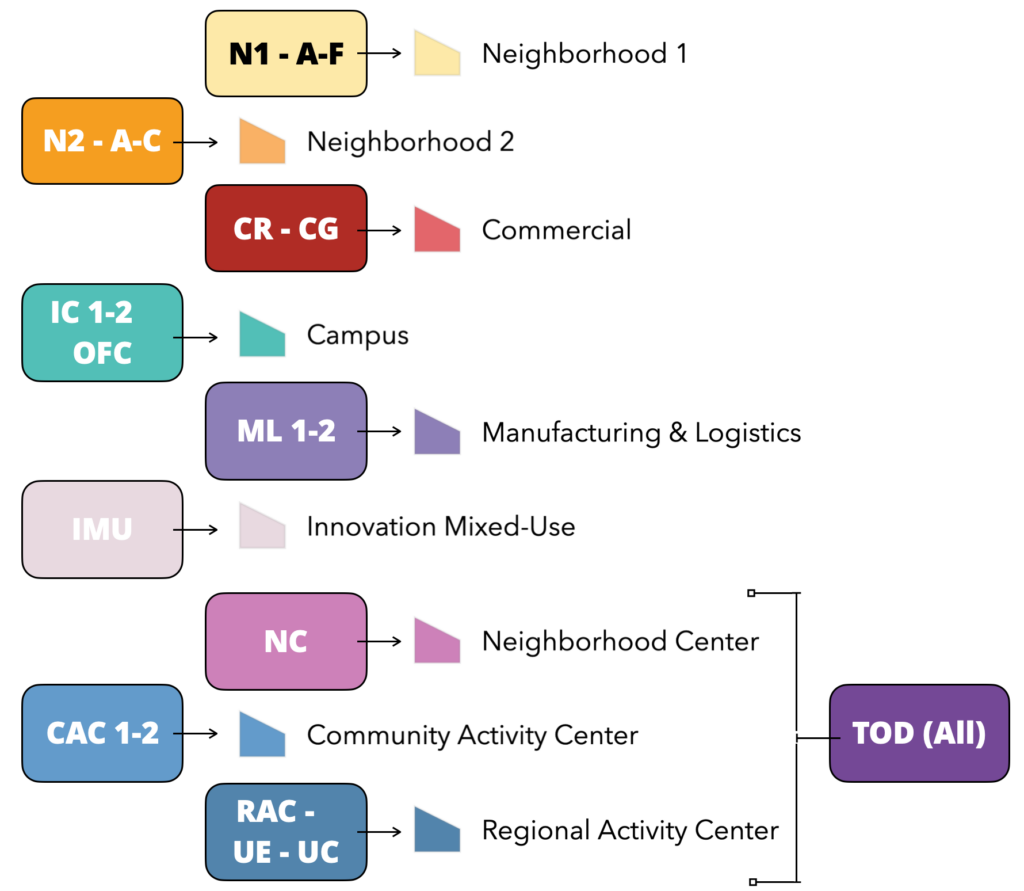How Charlotte’s new development rules will support sustainable transportation
Welcome back to our blog post series about the UDO, Charlotte’s first and only Unified Development Ordinance that will define our city’s development for the next several decades! If you missed our first blog post about the environmental issues in the UDO, you can find it here.

In case you need a refresher on what the UDO is or why you hear about it so much, check out our introductory blog post. To sum it up, if the Charlotte Future 2040 Comprehensive Plan is a watercolor painting of a vision for Charlotte’s future, the UDO is a detailed blueprint for what the City of Charlotte thinks it will take to get there.
As discussed in detail in the previous blog post, the city has extended the public comment period on the first draft of the UDO until March 18th this year, so we would like to use this opportunity to remind you about all the good things that the UDO could bring to our community. By submitting comments on the UDO, you can help us advocate for a prosperous, sustainable, and equitable city.
Each blog post covers a particular subject in the UDO (Electric vehicle, parking, and bike lane enthusiasts among us? Keep on reading!). At the end of each blog post, you will also find our call to action with examples of comments that you could submit to the UDO portal, as well as the submission instructions. Feel free to copy and paste the templates, customize them, or come up with your own.

Parking
Article 19 of the UDO talks about the parking tiers.
Tier 1 is for lower density, car-oriented neighborhoods in our city, with a high presence of single-family housing. This tier would require developers to provide at least a minimum number for off-street parking spots while having lost maximum parking standards.
Tier 2 includes much denser development, both residential and commercial, that sets both maximum and minimum parking for the developer to follow.
Tier 3 is for more intense and dense development. This tier eliminates parking minimum with few exceptions, and sets a limit on how many off-street parking spots could be developed.

Why is it important?
Many of us have been in a situation when you’re making circles around the neighborhoods trying to find that one available on-street parking spot to squeeze in, while not only putting your parallel parking skills to the test but also wasting gas and polluting the air. Yet research shows that creating more parking leads to over-dependence on driving. Parking spaces are expensive to build and maintain. Everyone ends up paying for them, whether they drive a car or not.
Reduction of parking spots in the areas that are expected to be densely developed, such as areas around rail transit stations and city centers, will give space to accommodate other modes of transportation. Reduction of automobile use in those areas and in the city overall, in the long run, will help improve the air quality. Note: The abbreviations in the image above refer to different place types that have been identified in the comprehensive plan adopted last summer. We won’t explain in detail which abbreviation refers to which place type, but you can read more about it here.

Electric Vehicle (EV) charging stations
The UDO will also cover regulations for electric vehicle (EV) charging station installation (check out article 19.3 of the UDO for more detail). EV charging stations will be required for all new parking lots and parking structures and will apply for multi-dwelling residential and mixed-use developments.
The amount of charging stations per parking lot will be determined based on the size of the proposed parking lot. For example, for parking lots that would only have no more than 9 parking spots, no EV stations will be required. However, any development that would require more than 50 parking spots would also have to make sure that a significant portion of their parking spaces are equipped with EV charging stations. The table below shows the distribution of required EV stations types for the bracket of parking lot size.

Why is it important?
Transportation is the number one source of greenhouse gases (GHGs) nationally and locally (40% of Charlotte GHGs emissions come from cars). Transportation has outnumbered the energy sector with the amount of pollution it brings to the environment in the state of North Carolina. The transportation sector has produces 36% of the state’s gas emissions in 2018 compared to 33% in the energy industry.
In order to encourage the use of electric vehicles, a more reliable and widespread EV charging infrastructure is needed to match the demand. It doesn’t solve the problem of the availability of EVs for the vast majority of the population, but it is a step forward towards cleaner air in our city. Sustain Charlotte recognizes the benefits that EVs provide for local air quality, but single-occupancy cars still perpetuate sprawl and car-oriented development patterns. We believe it’s important for Charlotte to focus on supporting electric public transit vehicles, such as CATS’ transition to a battery-electric bus fleet.
Comprehensive Transportation Review (CTR)
The Comprehensive Transportation Review Guidelines is a separate document that is designed to supplement the UDO. It is, in turn, a part of the Charlotte Streets Manual that together with the Charlotte Streets Map and Driveway and Access Rules provide transportation-related instructions on how the UDO should be implemented.
The CTR guidelines, if adopted by the City Council in July 2022, will apply the following way:
If the new construction of any type of building in a neighborhood, should it be an office building, or an apartment complex, or shopping center, or a mix of all three, is expected to generate a large amount of traffic movement in the area, the developer would be required to implement mitigation measures to balance out different transportation modes. The measure listed under the current draft of the guidelines vary and include anything from the partially subsidized transit passes for the residents/employees to onsite childcare facilities.
Since the Comprehensive Plan prioritizes the development of infrastructure that would support the needs of people walking, biking, and riding public transit in the city, the CTR is one of the ways to make sure such infrastructure is going to be built. For good examples of what CTR guidelines could look like in other cities, you can check our Austin or Boston.
Why is it important?
The Comprehensive Transportation Review Guidelines are a great tool to supplement other strategies that the city is adopting to ensure that communities benefit from development and the possible negative impacts are mitigated. What is the city trying to do with the CTR? The goal is to make sure that people have safe and convenient ways to travel without needing a car, hence, the multimodal infrastructure assessment.
The guidelines will help make sure that future development doesn’t adversely affect users of other transportation modes while providing mitigation strategies to reduce the impacts. It is also important to make sure that the mitigation strategies implemented in the guidelines are efficient and have a proven track record of reducing the impacts of increased traffic congestion that the new development will likely bring.
How can you support the ordinance?
It’s that time again in our blog series to voice your concerns and suggestions about the current UDO draft by submitting their comments through the UDO portal. To make it easier for you, we have prepared some templates of what could be submitted. Feel free to adjust them. Fill in your contact information first and then copy/paste the below article and section headers for your comments.
The instructions on how to post your comments to the portal are provided at the end of our previous blog.
**Please include the Article number(s) when inputting your comments so City staff can associate it with the proper section.
We encourage you to post comments on:
Parking
COPY: Article 19: Off-Street Vehicle & Bicycle Parking – Section 3: Table 19-1 Vehicle Parking Requirements
Insert your comments:
Here is some suggested wording:
- Some zoning districts that are designed to be developed as more walkable pedestrians friendly spaces, such as TOD, should have lower parking maximums
- Add the option for nongovernmental ownership if there is a shared parking agreement in place.
- Remove limits on the bicycle parking (19.4 REQUIRED BICYCLE PARKING Part C)
EV Charging stations
COPY: Article 19: Off-Street Vehicle & Bicycle Parking – Section 3 Required Electric Vehicle Charging Stations
Insert your comments:
Examples of comments
- The city should implement more EV charging stations in the city to curb the amount of GHGs in the air we breath
- The EV requirement should apply to all sizes of parking spaces, including parking lots with only 0-9 parking spaces.
- The UDO should enhance the existing EV infrastructure because, in order for people to switch to electric vehicles, people need to make sure that there are charging stations available for them, the same way as gas pumps are available for the majority of cars users.
- The city has committed to adopting more eclectic vehicles for the city’s use in order to reduce emissions. Those efforts are not enough, and the private sector and residents should join the efforts.
Comprehensive Transportation Review
Use this Page To enter comments:
Insert your comments:
Example of comments
- Some suggested programmatic strategies have a questionable distribution of points. For example, the distribution of materials should be 0.5 points instead of 1
- Some strategies do not provide mechanisms for how their efficiency would be assessed over time, and whether points should be reevaluated.
- More car sharing spaces should be dedicated for shared ride/car share parking, with a focus on hourly/daily car rentals vs on-demand types.
- Strategies should be implemented to evaluate the efficiency of these mitigation measures.
- Little development might be impactful but won’t trigger the benefits that the adjacent neighborhoods would need. The improvements that developers implement might be not enough. Lowering the threshold will capture more development.
- We want to make sure that the changes are going in a wider geography, so the impacted residents are not left behind.
- More mitigation strategies to add: “bus stop improvements” (for example, 1 point for the provision of a bench, and 2 points for provision of a shelter”; additional measures that would offset the need of travel, especially in a mix-use development (provision of the fitness center; convenience/grocery store; parcel drop off on-site for shipment”); car-share subsidy for membership costs)
These suggested comments are based on feedback that Sustain Charlotte has submitted to the UDO portal.
Thanks for reading!
As a nonprofit, community support is essential for us to keep doing what we do — including providing free articles like this. If you found this article helpful, please consider supporting Sustain Charlotte.
Want to stay in the loop? Subscribe to our weekly newsletter and follow us on Instagram, Facebook, and Twitter.
